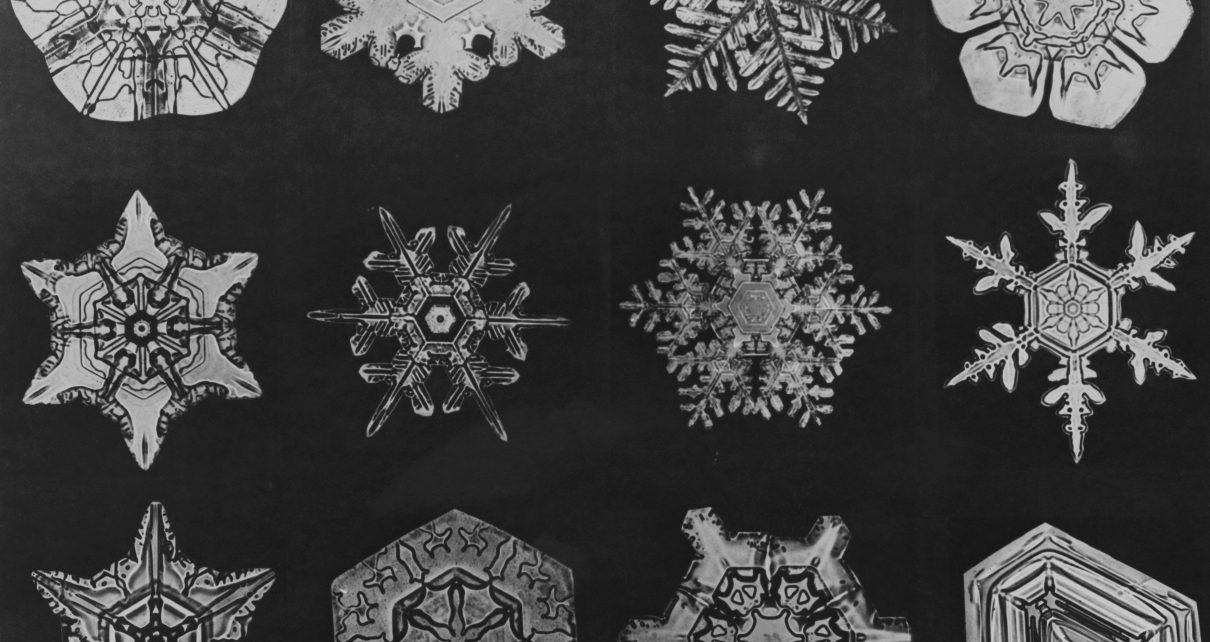In trying to make sense of this rapidly changing COVID-19 world, I reflected on the recent passing of one of the great physicists of our time, my former Princeton colleague and Nobel laureate, the late Phil Anderson. Anderson made seminal contributions to our understanding of fundamental interactions that make up matter, but to many scientists (and the public) he may be best known for an article he wrote called “More Is Different,” which describes how at different levels of complexity, new conceptual frameworks are required. He lays out this picture from the bottom up, by thinking about symmetries in the laws of physics and the forms of matter they describe.
An everyday example is the phase transition of water turning into ice; the water molecules somehow encode for the larger scale crystallinity—for example the beautiful sixfold symmetry of a snowflake—but how they do so is by no means trivial. As Anderson puts it succinctly: “The whole becomes not only more than, but very different from the sum of its parts.” These ideas have been inspirational to my lab’s research on phase transitions in biology, but also have broad relevance for much of science and society.
The COVID-19 pandemic provides a number of striking illustrations of Anderson’s point. An individual virus particle is by itself inert, and by most definitions, it is not even alive. And while it appears to be capable of “living” on surfaces for some time, it does so only in the same sense that a nanoscopic lump of salt can also do so. What remains for far too long is its Trojan horse message; the virus itself is just a set of instructions—a strand of RNA, encoded within a protein- and lipid-rich capsule, a tiny packet of “information-bearing crystallinity” as Anderson would call it.
When that information gets into one of our lung cells, the cells mistakenly make more copies of the virus; it begins to replicate. Each new virus can then go on to act as its own agent of destruction, each making further copies, analogous to the power of an uncontrolled nuclear chain reaction. This replicative cascade—viruses both within an individual and then from one person to the next—is the basic principle of exponential growth: the rate of increase in virus number is proportional to the viral number—more makes more—a recipe for a mind-boggling acceleration into an increasingly “different” world.
This ever-increasing degree of “more” by necessity begets a similar exponential evolution of mitigation strategies. At the beginning of the outbreak, efforts were focused on contact tracing to identify individuals who came in contact with known COVID-19 cases. As the outbreak grew, the efforts focused on containment not at the level of interactions among individuals, but at the level of larger groups and whole regions (e.g., Hubei province).
But now that cases are found in nearly every country, the aim to isolate affected social contact networks is impossible. It has become essential to clip all interactions, de-networking the entire system with extreme social distancing. As the scale of the pandemic increases, it requires new ways of thinking about the problem, going from the level of individuals, to the isolation of whole regions or groups of people, and then reverting back to a focus on the individual level.
The destructive information encoded in the virus transformed the entire system, and it continues to do so not only at the level of containment, but also in our attempts at biomedical intervention. In the earliest stages of its outbreak, so little was known about COVID-19 that little could be done. As the scale of the pandemic has grown, logistical issues have emerged—finding enough hospital beds, respirators, as well as face masks and other PPE—with disruptions to supply chain networks snowballing.
Scientists and engineers are trying to solve the problem of rapid production of masks, respirators and other essentials, and companies are retooling to produce these quickly; Tito’s Vodka and many other distilleries are producing tons of hand sanitizer. Nations are making efforts to develop and distribute resources at a magnitude that has not been seen since World War II; in the U.S., such endeavor is vast but has been conducted largely on a state-by-state basis. The scale and duration of the outbreak are now such that it is no longer sufficient to wait for the development of preventive vaccines, which could take at least 18 months; there is now a rapid push for repurposing FDA-approved drugs to treat the illness.
The disorienting feature of the exponentially growing COVID-19 pandemic is the pace at which things become qualitatively different—from mitigation to treatment and even to lifestyle. Cracks are now appearing in distribution networks of food and other essential goods, portending new concerns as the “more” of the virus take us into a new level of “different.” Mental health issues have emerged, with all members of society facing the distinctly unsettling stress associated with this rate of change; exponentially growing “more” means an exponential pace at which things become qualitatively “different.”
When the number of cases doubles every three days, we quickly find ourselves in a world where the qualitative nature of the problems and their solutions change several times each week. On Monday, I might be worrying about how long it will take for some electronics to be shipped to me, and by Friday I suddenly have to worry about how to manage my kids who were sent home from school.
By the following week the stock market has crashed, companies have closed and the concern shifts to buying food without a paycheck. In some locations, the sight of bodies accumulating in refrigerated trucks or even on the street has become the new norm. Anderson would have understood how a virus—a tiny packet of information, a crystalline form of matter—could change our world so quickly.
To address this threat, which barely shows signs of slowing down—and will likely resurge, particularly if society opens too quickly—we as a nation need to mount a very different type of response. Until now, the approach has been ad hoc, led by decisions of individual states, competing with one another for scarce resources, often with conflicting appreciation for the exponential inevitability of its impact. Our country has always been more than the sum of its parts, a fact grammatically codified at the end of the Civil War, when the United States began being referred to in the singular.
But the COVID-19 War—which, absent an integrated response, could still end up killing as many as that terrible divisional conflict did—requires the emergence of an America prepared to be not only more than, but different from, the sum of individual states. COVID-19 is not the first pandemic, and it will not be the last. But it should be the last fought with a fragmented army, unready for a steely battle with invisible but morbidly persistent enemies.




